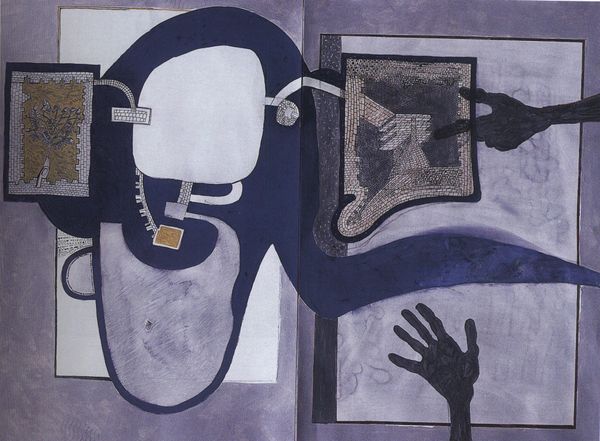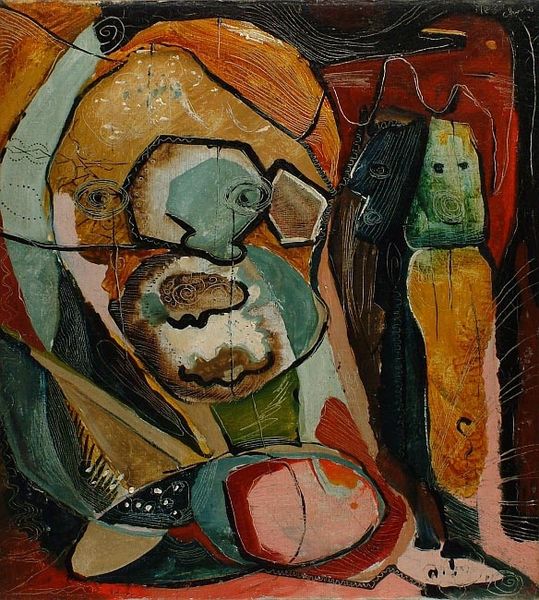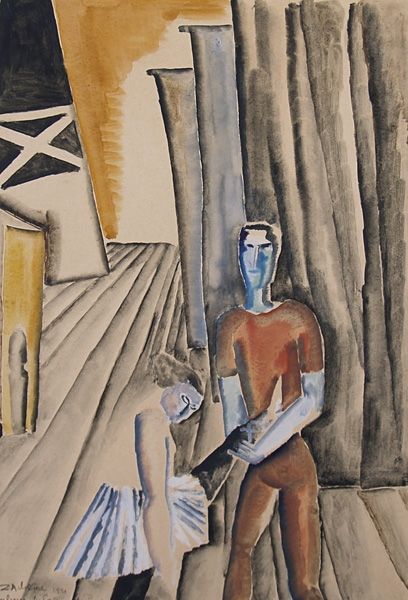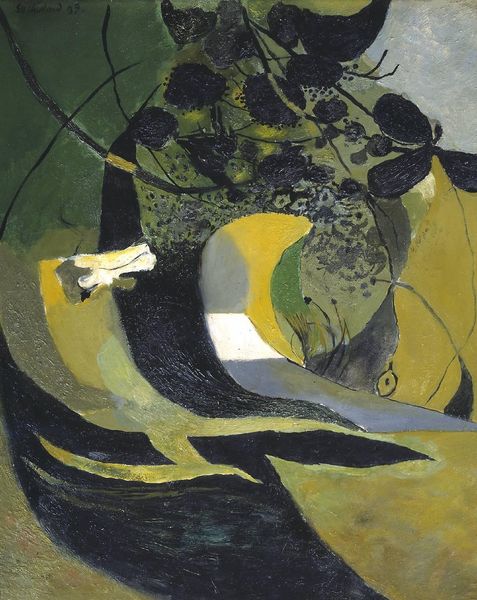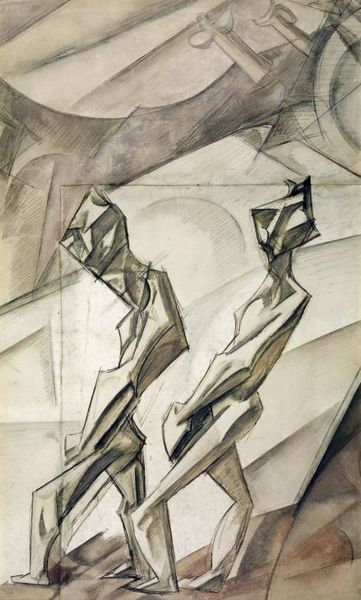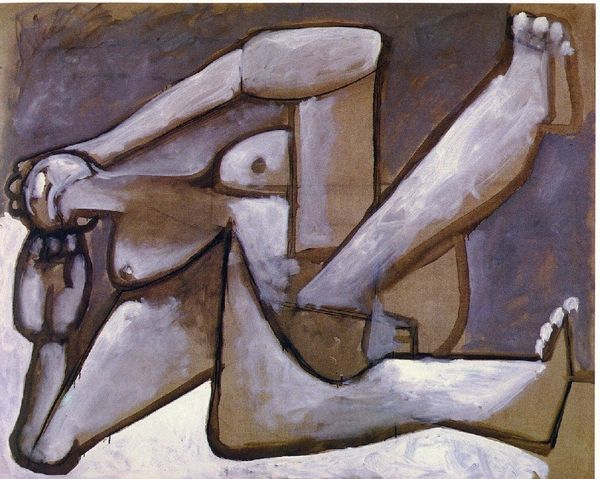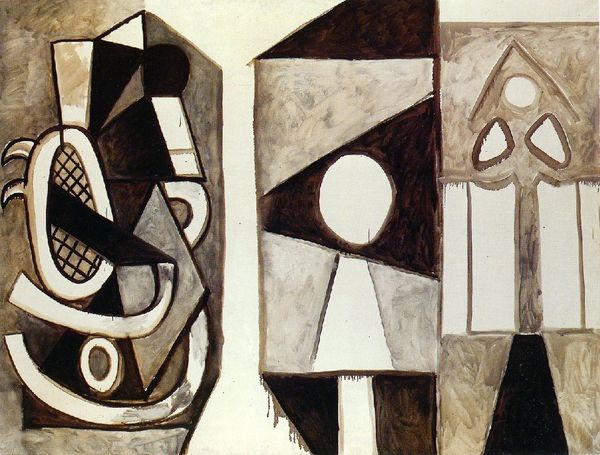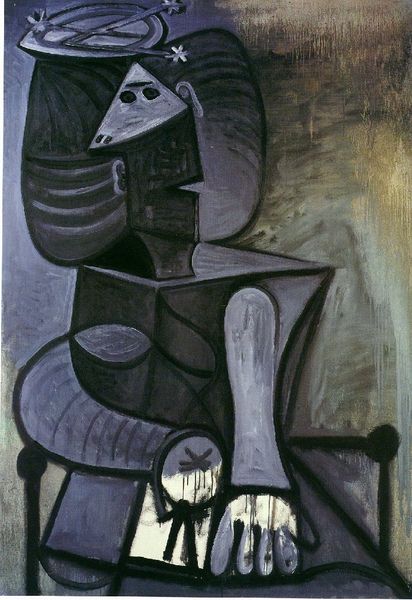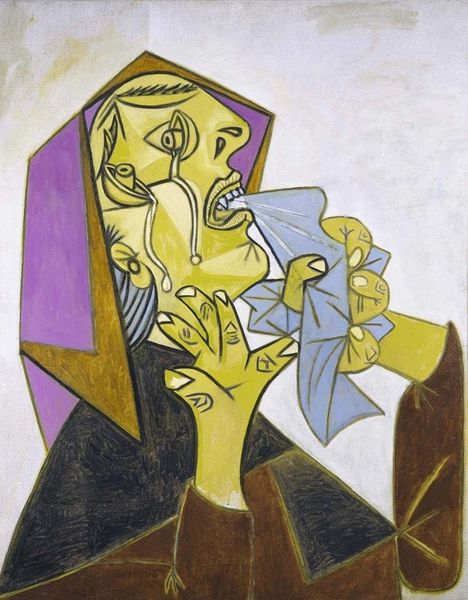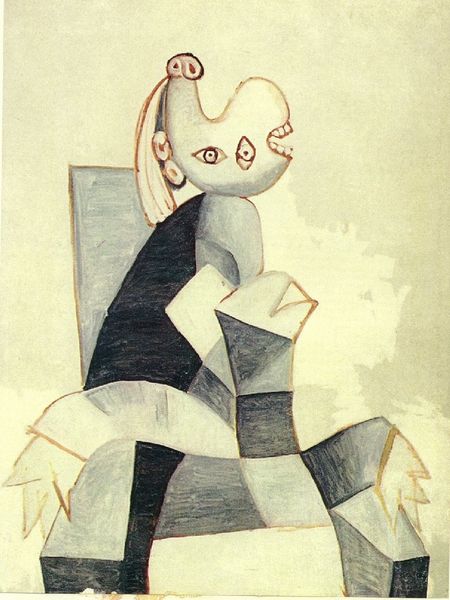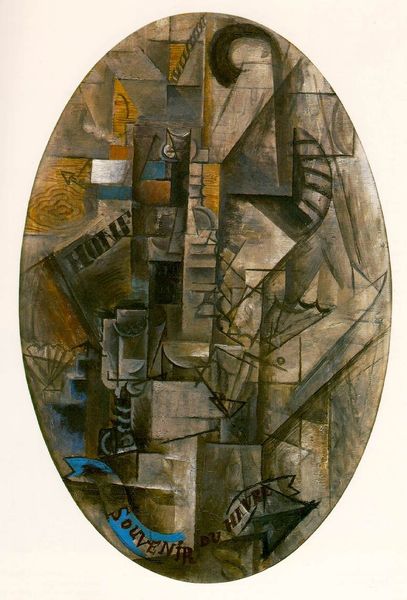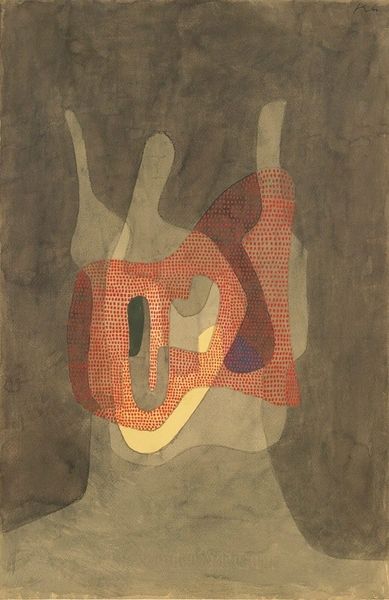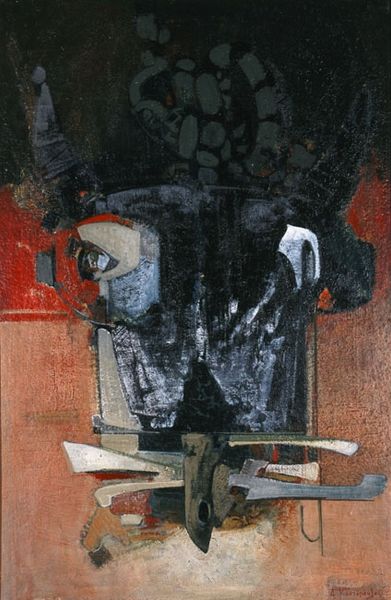
Copyright: Oswaldo Guayasamin,Fair Use
Curator: Oswaldo Guayasamin's oil painting, "El Grito II," created in 1983, immediately arrests with its raw emotion. What’s your initial impression? Editor: Stark, definitely. The hands dominate – they are skeletal, reaching, a gesture of desperation against that black void. It feels almost like a visual representation of anguish, resonating with primal fear. Curator: That feeling aligns with Guayasamin's broader work. He dedicated his art to depicting human suffering, particularly focusing on the impact of political oppression and social inequalities across Latin America. He experienced a lot during the civil war in Spain. The hands, in his work, recur as symbols of pain but also of solidarity. Editor: Those oversized hands, though, feel very symbolic. Is it intended to communicate some form of universal pain or memory beyond the merely personal or political? It is expressionistic to the core, stripping away all but the essential, archetypal imagery. I read those skeletal hands like one reads a cave painting – universal suffering throughout history. Curator: It definitely transcends a specific historical moment while still speaking to real historical and ongoing struggles. Guayasamin was very active and involved in a wide array of political projects that sought recognition, and dignity for marginalized people. Editor: The head is equally evocative – distorted features, hollowed eyes. The artist gives a specific face that feels haunted. All are recurrent in symbols depicting those who suffered through dictatorships during this period in South America. This recalls Francis Bacon and even echoes back to Munch – this idea of modern anxiety in human experience. Curator: Precisely! And remember that this painting also forms part of his larger series "Mientras vivo siempre te recuerdo" or, in English, "While I Live I Always Remember You," dedicated to his mother after her passing. This imbues the anguish with personal loss, connecting macro and micro traumas. Editor: It's remarkable how Guayasamin distills such complex socio-political realities and grief into these potent symbols and archetypes, forging an artwork which lingers with viewers across the years. Curator: It reminds us to look deeper, to confront injustice wherever we see it, and to never forget those who suffered. Guayasamin makes this impossible to ignore. Editor: Indeed. The painting offers a potent message of solidarity. A call for humanity and human dignity that we still struggle to embody.
Comments
No comments
Be the first to comment and join the conversation on the ultimate creative platform.
